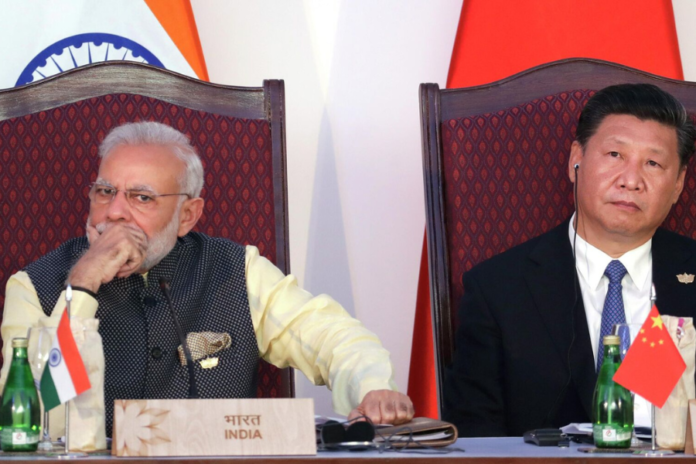India is the top destination for Chinese enterprises when only looking at investment potential, but when other criteria are taken into account, it drops to 11th position overall as the most appealing country.
Singapore was ranked as the most desirable location for Chinese companies to invest in in a recent Economist Intelligence Unit (EIU) research that ranks 80 investment destinations based on their appeal to Chinese investors.
With the use of the China Going Global Investment Index, nations are ranked according to how appealing they are to Chinese outward direct investment (ODI). It aims to help Chinese businesses reduce their list of potential investment locations and concentrate recipient governments’ attention on the issues important to Chinese investors.
The index for 2023 was created using a total of 200 indicators. These are categorised into broad categories including supply-chain extension, market expansion, resource discovery, technology acquisition, and risk management. The bilateral relations between a nation and China as well as the operational and financial hazards to all international investors are taken into account when assessing risk.
Bolivia and Uzbekistan are two new markets that EIU has included in this year’s study that are attracting the attention of Chinese investors. Risks were given more weight, especially those related to geopolitics, which reflects investors’ growing aversion to risk in their investing decisions.
Many advanced markets had their rankings fall dramatically in the 2023 ranking. The US is ranked 28th, followed by Japan (36), Canada (55), and the UK (60). Their deteriorating ties with China and the subsequent screening of foreign investment, which creates considerable obstacles for Chinese investors, are the primary causes.
Chinese investment in sensitive industries like telecommunications and advanced manufacturing is now subject to greater scrutiny. Despite this, investors in non-sensitive sectors continue to find them appealing due to their unrivalled market size, high income levels, stable operating environments, and expertise in technology and innovation. As a result of continuing to rank among the top 20, Switzerland (7th) and New Zealand (14th) stand out in this situation.
The 2023 rankings make clear considerations for risk. As Chinese investors try to avoid the possibility of secondary penalties, the rankings for Russia (15th) and Iran (43rd) have dropped or remained low. Despite this, Russia still ranks in the top 20 due to its abundance of resources and size of the market, particularly now that Western businesses have left the market, leaving vacancies in industries not subject to sanctions.
The Belt and Road Initiative (BRI), a massive global infrastructure development project for the developing world that invests in ports, skyscrapers, railroads, roads, bridges, airports, dams, coal-fired power plants, and railroad tunnels, was first introduced by China in 2013 and coincided with the last time the EIU published the index.
Although there are no official numbers for the total amount invested to date, data provider Refinitiv claims that as of the first quarter of 2020, the value of BRI projects has surpassed USD4 trillion with more than 3,000 projects.
The EIU’s China Going Global Investment Index was updated in honour of the tenth anniversary of the BRI in order to “demonstrate the quantifiable aspects of overseas investment strategy decisions and a systematic approach to identifying opportunities and risks, leveraging EIU’s economic forecasts and forward-looking risk-assessment metrics.”
Due to its standing as an established global economic centre, its cultural ties to China, and its neutrality in the conflicts between China and the West, Singapore leads the list as the most alluring location for Chinese investors.
According to the EIU, this will reduce the operational risks for Chinese investors and enterprises, who frequently face limitations abroad. For Chinese businesses attempting to enter Southeast Asia’s rapidly expanding market, Singapore acts as their base of operations. Additionally, it provides prospects for research and development because to its famous technological skills.
Other Southeast Asian countries have steadily moved up the rankings over time, with Indonesia rising from 44th to 2nd in part because to its nickel riches, a plentiful supply of inexpensive labour, and a sizable market.
Southeast Asia as a whole has had rapid economic expansion, witnessed the growth of the middle class, possesses many vital natural resources, and is comparatively receptive to Chinese investors. Additionally, the area has built up a respectable infrastructure, developed complementary supply chains with Chinese suppliers, and benefited from lower tariffs in important export markets downstream.
In the rankings, India moved up from 33rd place in 2013 to 11th place, and in principle, it presents huge investment prospects for Chinese businesses. When looking solely at investment potential, it comes in first and is predicted by EIU to have one of the fastest rising economies in the 2020s. It is the only individual market that provides a potential size similar to China’s.
Additionally, due to China’s dependence on India for essential inputs like solar panel components and electrical components, Chinese investors have a window of opportunity.
Geopolitical dangers and tense bilateral relations, however, reduce its overall rating as a location for Chinese investors. Other elements that will make it difficult for Chinese investments to succeed include India’s emphasis on independence and its implied rivalry with China. According to EIU, international businesses face operational risks such bureaucratic roadblocks, protectionist attitudes, and difficulties with land acquisition regardless of where they are from.



